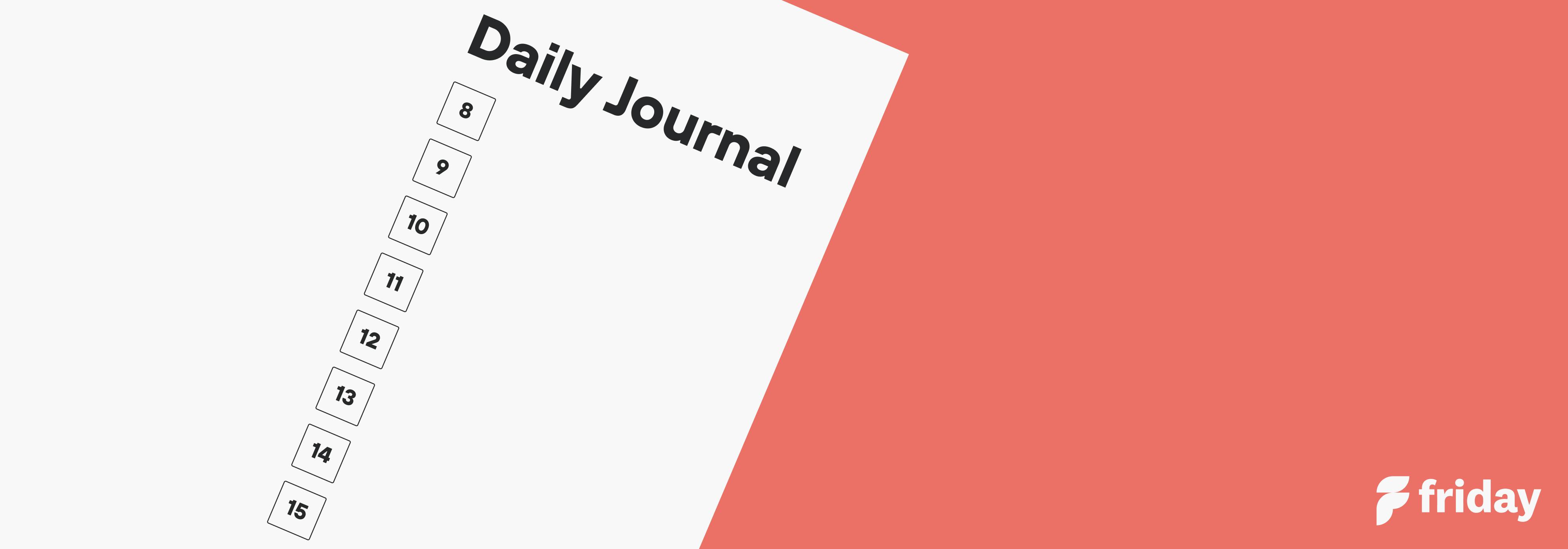The Fundamentals and Benefits of the Bullet Journal Weekly Spread
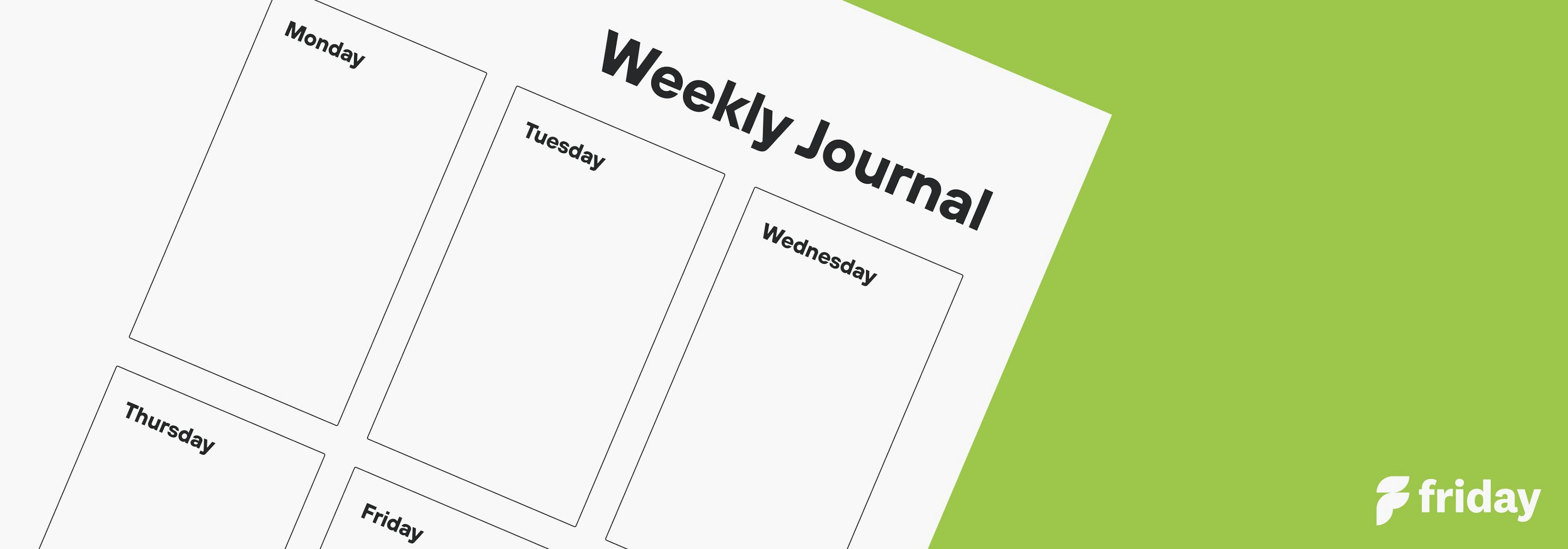
If your working schedule conforms to the standard practice of a five day week, you’re all too familiar with the dread of Monday morning, the fervent anticipation of Friday afternoon, and the phenomenon of the mid-week slump. The famous Accountemps study, in which over 300 human resource managers were surveyed, found Tuesday is indisputably the most productive day of the week. Unfortunately, the week takes quite a dive immediately after.
The ambitious amongst us may ask themselves: “How can every day be Tuesday?”
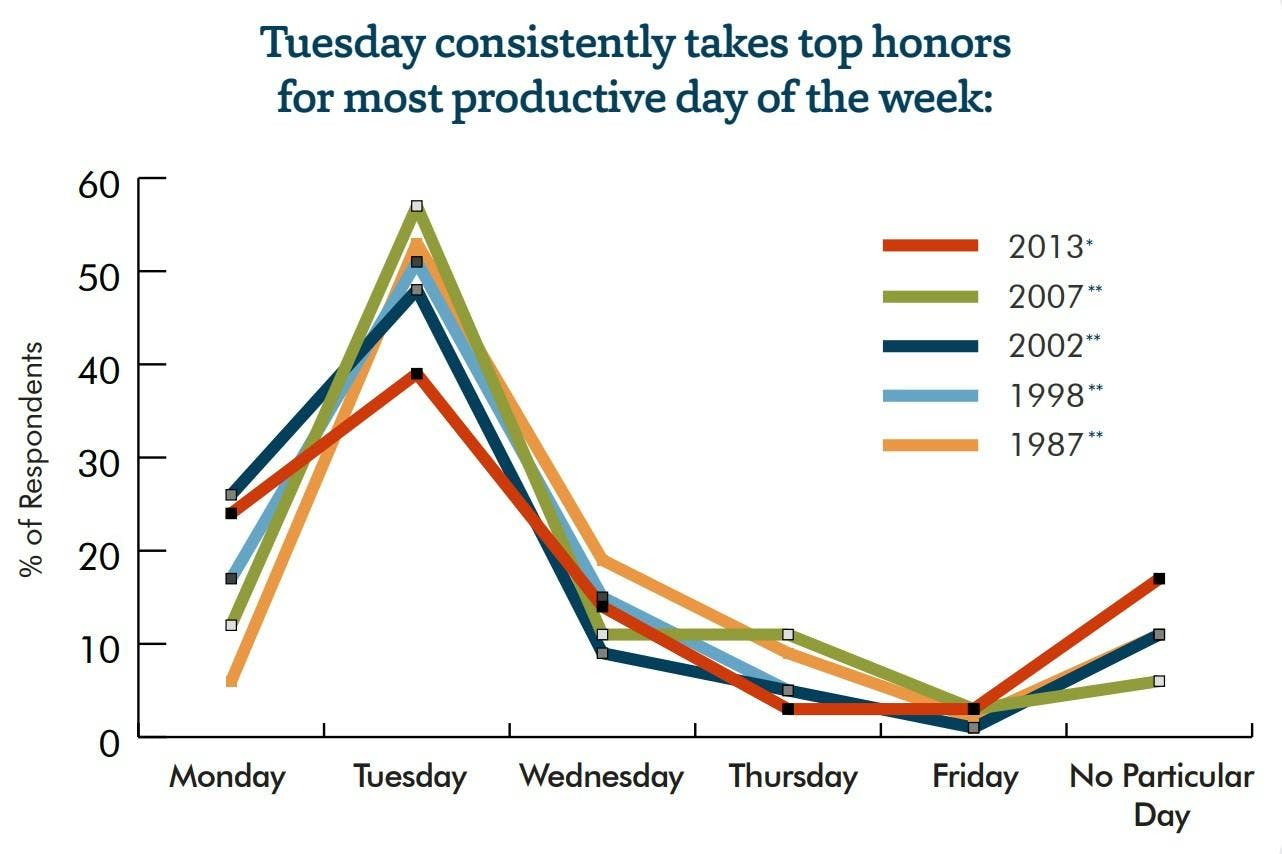
Perhaps the biggest challenge of the week is that you are required to maintain your focus across a longer timeframe, a feat that is intrinsically unnatural. Human nature is present-minded, as our brains just aren’t powerful enough to keep track of everything that either came before or will come later.
Consequently, many spend an alarming amount of time during their initial start to the morning trying to remember what it was exactly that they were working on. What needed to get done?
The trick that many are learning is that a carefully constructed bullet journal weekly spread is a surefire solution to a more productive week.
What is a weekly spread for Bullet Journals?
A weekly spread is an overview of your week. That’s it!
Structurally, it’s not dissimilar to the popular diary format of splitting a week into two pages. Stylistically, however, bullet journaling your schedule is notably distinctive.
The basic categories of the weekly spread are practically the same as the daily spread, but with the omission of more expressive practices, such as personal thoughts, ideas and doodles. These sections are better suited to your daily log and recorded as you naturally experience them.
The weekly spread can be thought of as two parts:
What I must do:
- Tasks
- Events and Appointments
- Reminders
- Targets/Goals
- Notes (specific to the above)
What I have done:
- Trackers
- Progress Check
- Reflection and Introspection
- Migration of Unfinished Tasks
When it comes to the precise details of each task you have, the weekly spread need not be as particular as your daily entries. Instead, the weekly spread should be a means to schedule seven days as one collection of key moments.
Let’s look at a few interpretations of the bullet journal weekly spread:
1. Vertical
The easiest and most intuitive way to split your double-page is simply by dividing it into 6 or 7 equal segments, each attributed to one day. Look at this example from Square Lime:
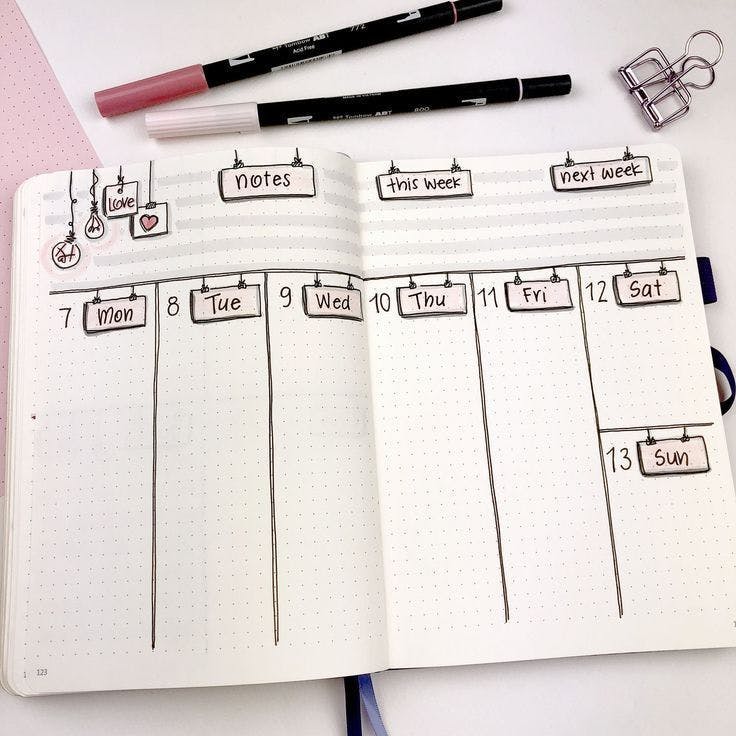
Although it’s basic, this layout does allow for an easy comparison of your exact responsibilities throughout the week. Alternatively, one could add a horizontal section at the bottom of the page to add supplementary sections, such as trackers, professional ideas or other creative outlets.
2. Rapid-Log Style
First are foremost, Bullet Journaling starts with the “Rapid Logging” of your most pertinent tasks, responsibilities and objectives. The Bullet Journal website says “Rapid Logging is the language in which the Bullet Journal is written [...] a way of capturing information as bulleted lists.”
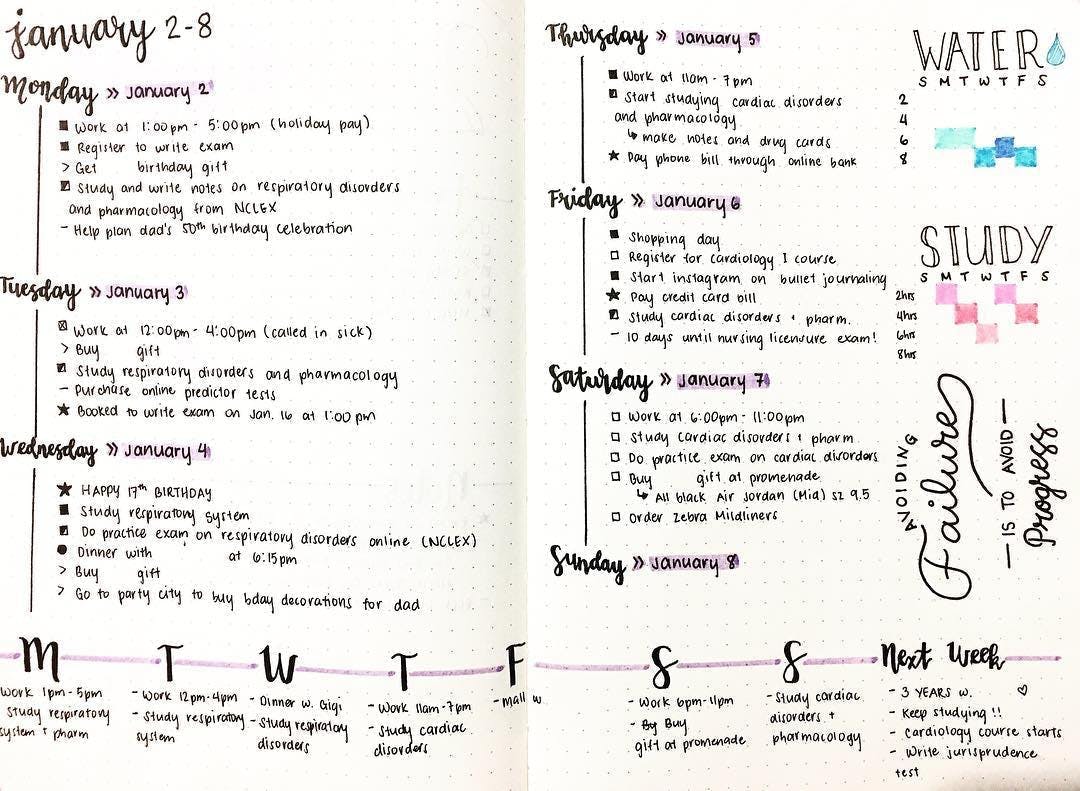
For this kind of spread, you rapid log your tasks, events and goals as a single, flowing list, separated into the days on which you plan to complete them. You can also use a horizontal timeline to showcase your high-priority jobs. In other spaces, you can include habit trackers as grids - whereby squares are checked, filled or colored once complete - or some words of inspiration. (Above image is from The Fab 20s).
3. Modular
Perfectionists will most definitely relish the idea of a modular weekly spread, which gives you countless options to include interchangeable boxes specific to certain aspects of both your personal and professional life. By limiting the physical space your days of the week take up, you can present a few main targets. This leaves room for vital habit and behavior trackers. See this from Diary of a Journal Planner:
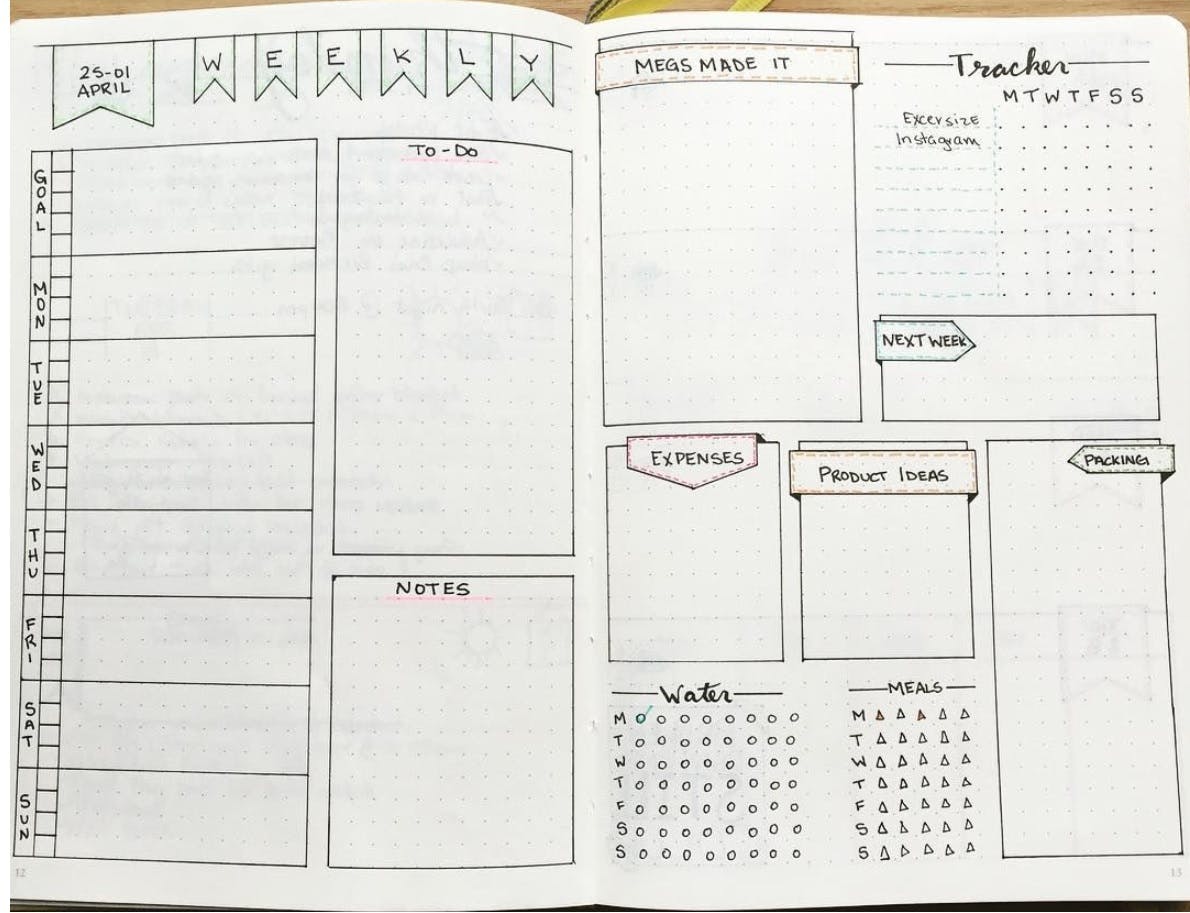
While thousands of creative, wonderful minds have taken up the art of Bullet Journaling, there will always be those who prefer a minimalist approach to neatly organize their lives. The immediate advantage of this method is that you are able to outline your week exceptionally quickly.
Bonus: Try out these vision board templates!
4. Minimalist
While thousands of creative, wonderful minds have taken up the art of Bullet Journaling, there will always be those who prefer a minimalist approach to neatly organize their lives. The immediate advantage of this method is that you are able to outline your week exceptionally quickly. See this example below:
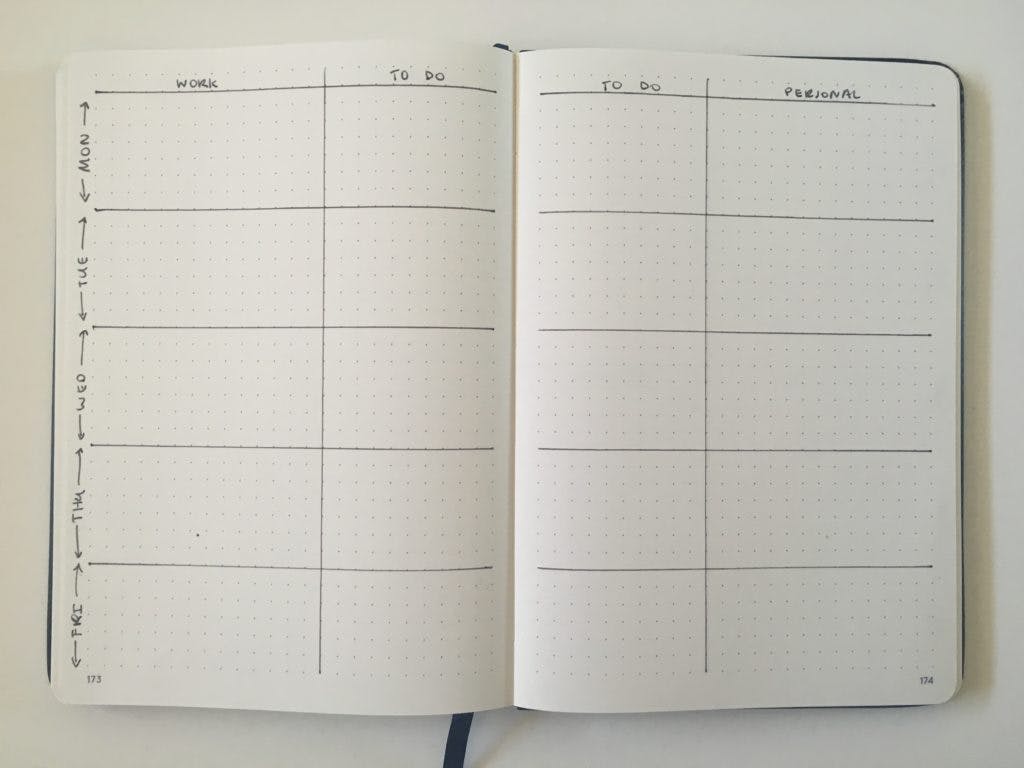
Using a Digital Bullet Journal Weekly Spread
As well as the aforementioned benefits of using a weekly spread, choosing a digital format such as in Friday offers a few noteworthy additions.
Customizable Templates:
If you have a plethora of information but no place to put it, coming up with a layout may prove challenging. Digital journals offer personalized templates so that your main concern can be your work, not the architecture.
App Integration
If you already make use of your calendar, notes, habit-trackers or other planning applications, digital planners offer a more stress-free merging of your data onto an online platform.
Adaptable Nature
Digital can always be updated easier than pen and paper, because you can always make changes retrospectively. This flexibility will make changing your week, or migrating incomplete tasks, painless and efficient.
Using any weekly spread layout, analog or digital, will still give you the ability to see your collective to-dos and space out your work evenly, in a more manageable fashion. However, the more substantial benefits lie deeply rooted in psychology.
How To Use a Bullet Journal in Friday
1. Use the Friday planner as your bullet journal. You can see meetings, tasks, routines, and goals in one place, like a daily log or weekly spread.
2. Integrate your tools. The Google Calendar, Outlook/Microsoft To Do, Todoist, Asana, ClickUp, Trello and more can work with the Friday planner.
3. Get the Friday Chrome extension and have your tasks and meetings in each tab.
4. Set routines and enter responses as a check-in, end of the week reflection, for morning gratitude, and lots more templates to choose from.
Check out this complete breakdown of using Friday as a digital bullet journal or watch the video below!
Benefits of a Bullet Journal Weekly Spread
Increased Productivity
A well-known study in the field of productivity was done by Dr. Gail Matthews, a psychology professor at the Dominican University in California. She found that you are 42 percent more likely to achieve your goals just by writing them down.
It’s not only writing down your goals that’s important, but a systemic strategy that a weekly spread represents. Dr Valerie P. Jackson advises individuals to “break large, important projects into manageable segments [to] improve productivity and the quality of life.”
A weekly spread acts as one of the fastest ways to get organized, boost your productivity, and gain a real sense of accomplishment when you reach the weekend with a fully finished checklist.
Habits creating Habits
Bullet Journaling offers individuals repeated opportunities to reflect on their activity, but weekly spreads rest in the brilliant space between the faraway events of the month and the unpredictable specifics of a day. One week is the ideal length of time to process exactly what you achieved in an easily-digestible manner. It’s the goldilocks realm: not too hot, not too cold.
The cornerstones of such effective progress checking are trackers. Habit trackers work because they encourage you to proactively and repeatedly examine your measurable levels of productivity. In turn, this conditions you into self-actualizing your target behaviors by affirming previous progress and personal development.
James Clear, author of Atomic Habits, the #1 New York Times bestseller which explores these techniques, writes on his website:
“No matter what design you choose, the key point is your habit tracker provides immediate evidence that you completed your habit. It’s a signal that you are making progress [and] a subtle reminder of how far you’ve come.”
The British Journal of General Practice says “habits are also cognitively efficient, because the automation of common actions frees mental resources for other tasks.” In other words, by using the features of a bullet journal weekly spread, you are able to better automate yourself, thus freeing up mental capacities for your more pressing personal and professional concerns.
Stop and Make a List
Tuesday may be the most productive day for most, but those who willfully keep track of their goals – statistically proven to be more successful – might just find a way to make it a five-way tie.
The famous writer Katherine Mansfield wrote in her journal that “It’s very strange, but the mere act of writing anything is a help. It seems to speed one on one’s way.”
So when you find yourself struggling to manage your time, prisoner to the powers of procrastination, or easily stalled by the distractions of the world… stop for a moment.
Make a list of things to do.
Collect your thoughts and jot them down on a writing app.
Organize it, and you may just discover how productive your week can be.

